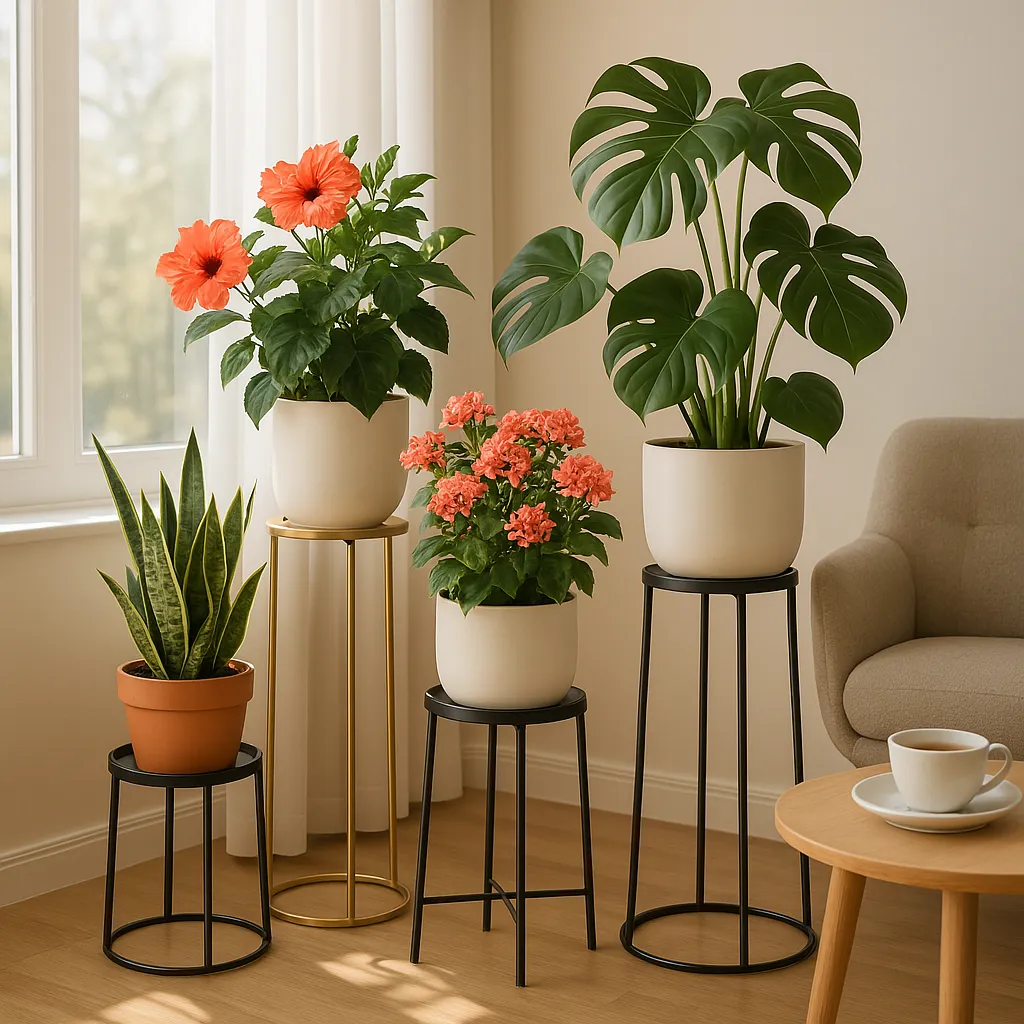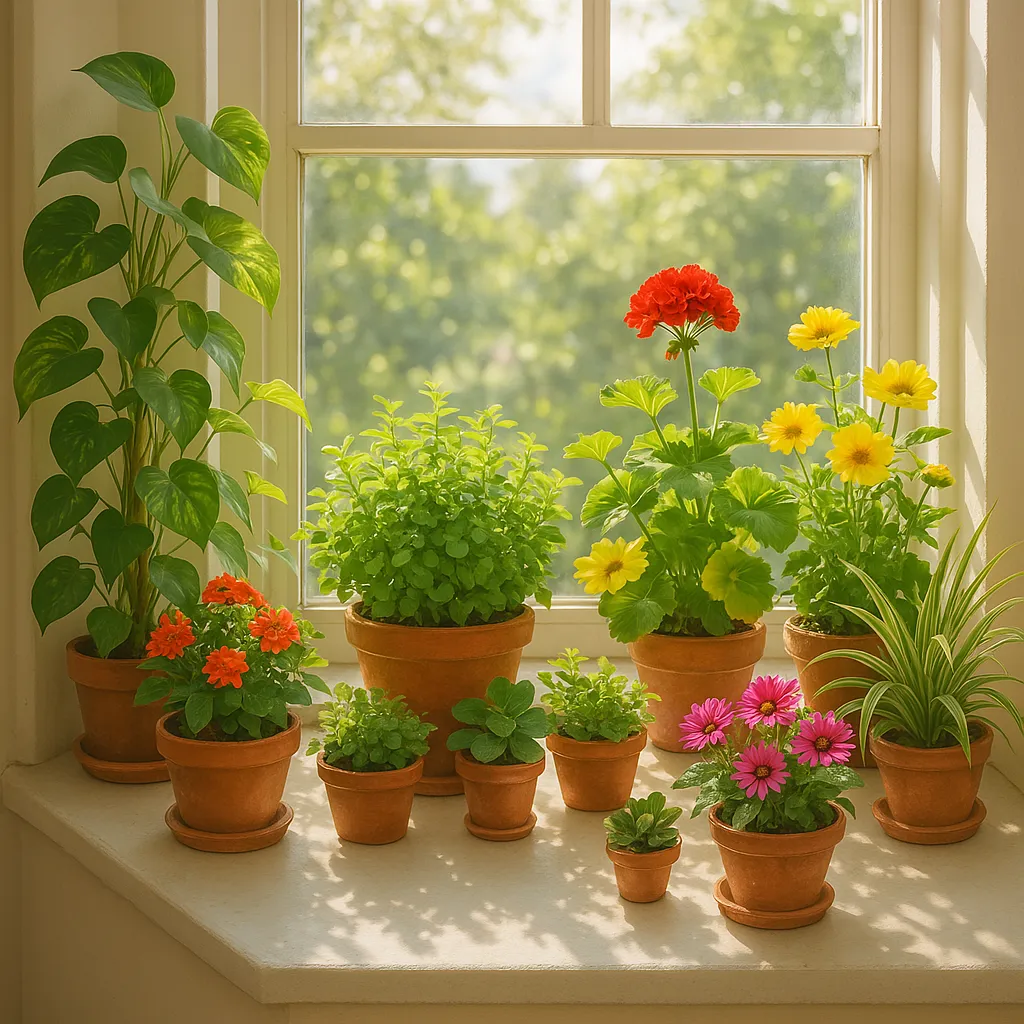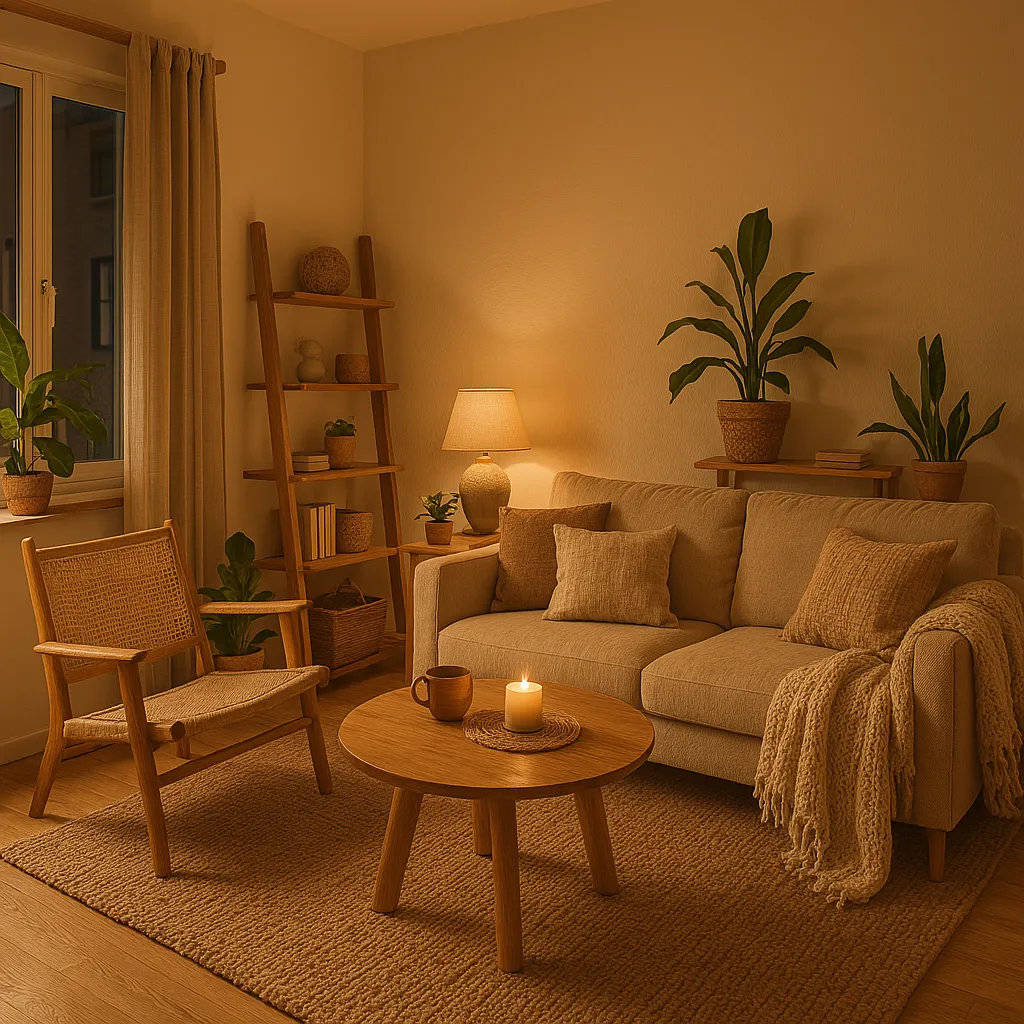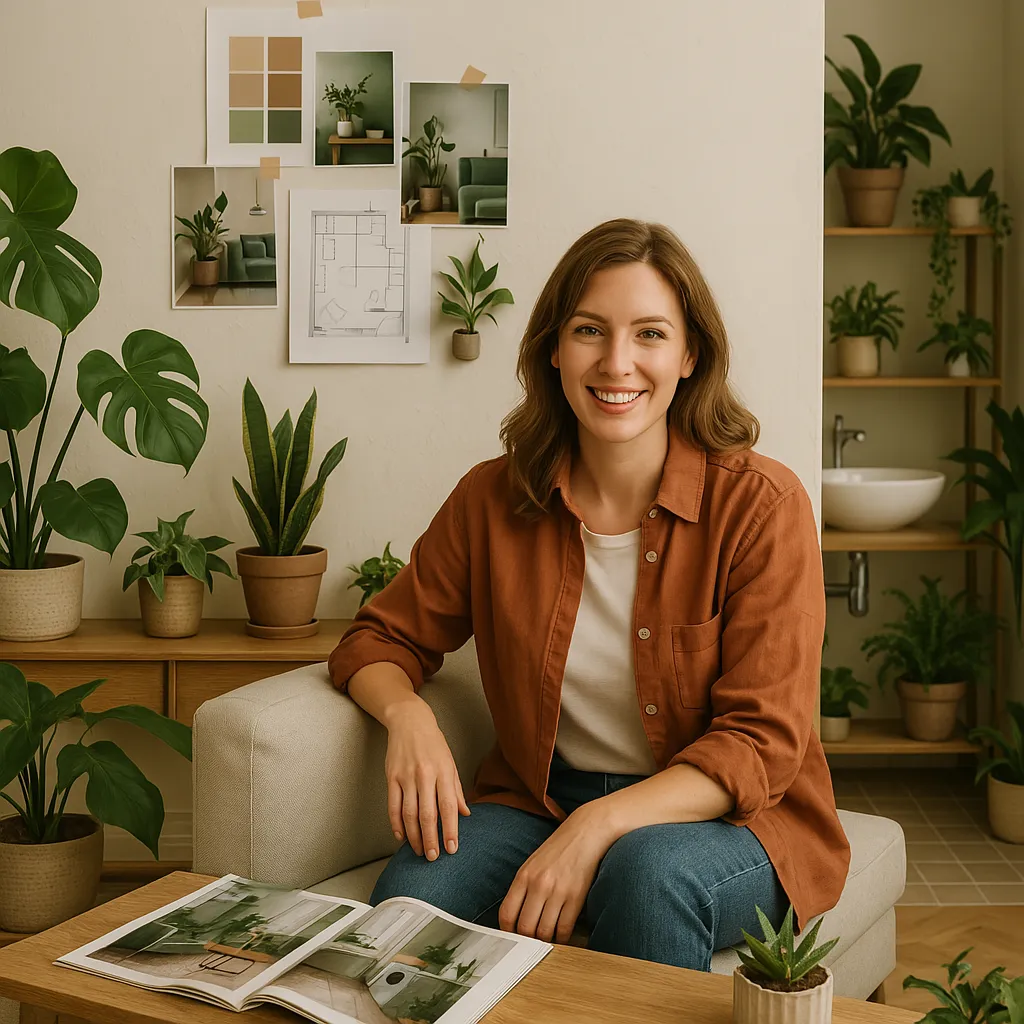
Ivy L.
Indoor Gardening & Plant Care
Introduction: Why Biophilic Design Matters (Even on a Budget)
If you’ve ever felt a little more at ease after a walk in the park or found yourself drawn to a sunlit window, you’ve already experienced the magic of biophilic design. At its heart, biophilic design is all about weaving elements of nature into our everyday spaces—especially important for those of us living in apartments or homes with limited outdoor access. And here’s the best part: you don’t need a sprawling garden or a big budget to bring the calming, restorative power of indoor nature into your life.
As someone who’s spent years styling compact city spaces, I’ve seen firsthand how even a single leafy plant or a splash of natural texture can transform a room. Biophilic design isn’t just about aesthetics; it’s proven to boost mood, reduce stress, and even improve air quality. For urban dwellers, these benefits are a gentle reminder that nature isn’t out of reach—it can thrive right alongside us, no matter how small our space or tight our budget.
Whether you’re a total beginner or just looking for budget-friendly ways to refresh your apartment, I’m here to guide you. Together, we’ll explore simple, affordable ideas to help you create your own indoor oasis—one that feels welcoming, nurturing, and uniquely yours.
Key Elements of Affordable Biophilic Design
When it comes to budget biophilic design, you don’t need a sprawling space or a designer’s budget to bring nature’s calming influence indoors. Here are the core elements I always recommend for creating a natural home decor vibe, even in the smallest apartments:
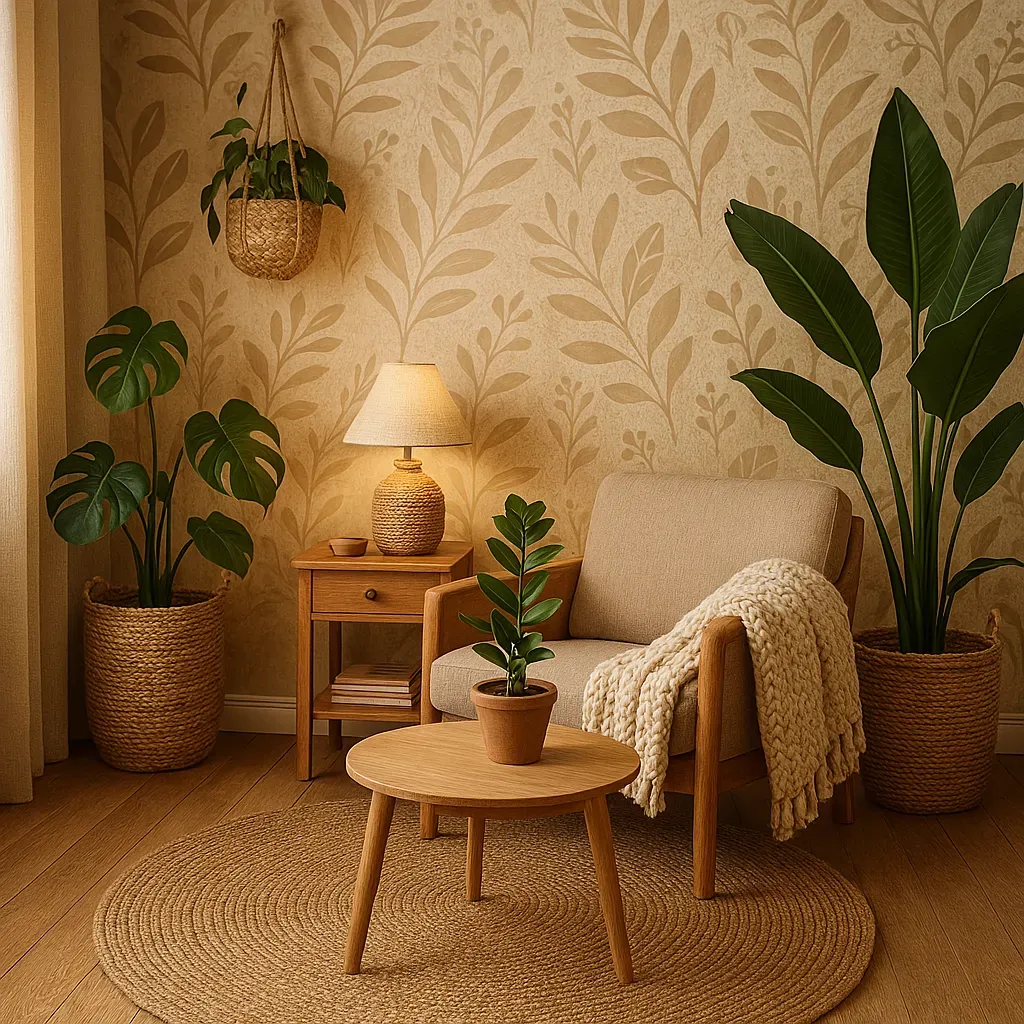
- Hardy, Low-Cost Live Plants: Start with indoor plants for beginners like pothos, snake plant, or ZZ plant. These green companions are not only affordable but also famously low-maintenance—perfect for anyone new to plant care or working with limited light. I love placing a trailing pothos on a bookshelf or a snake plant in a cozy corner to instantly soften the space and boost air quality. For a simple, cohesive look, try using KAHEIGN 6Pcs Plastic Plant Pots for your foliage, succulents, or herbs—they’re durable, come in calming colors, and include drainage trays to keep your plants healthy.
- Natural Materials: Incorporate touches of wood, stone, jute, or wicker through small accessories. Think a wooden tray on your coffee table, a jute rug by your bed, or a woven plant basket for your favourite indoor plant. These materials add warmth and texture without overwhelming your space or your wallet. Thrift stores, online marketplaces, and even DIY upcycling projects are fantastic sources for affordable finds.
- Nature-Inspired Patterns: If you’re not ready to commit to a full wall of botanical wallpaper, try adding throw pillows, curtains, or even a small area rug with leafy or organic patterns. These subtle nods to nature can make a big impact, especially in compact rooms.
Beginner Tip: Start small—choose one or two elements to introduce at a time. For example, pair a hardy plant with a woven basket, or swap out a plain pillow for one with a fern motif. Layering these touches gradually helps you discover what feels right for your space and style.
Remember, budget biophilic design is all about creating a sense of calm and connection to nature, no matter your square footage or experience level. With a few thoughtful choices, you can transform even the tiniest nook into a serene, green retreat.
DIY & Upcycling Hacks for a Nature-Inspired Home
Bringing the outdoors in doesn’t have to mean splurging on designer planters or custom shelving. Some of my favourite biophilic design moments have come from a little creativity and a willingness to give old items new life. Here are three beginner-friendly, budget-wise DIY plant decor projects that are perfect for renters and small spaces:
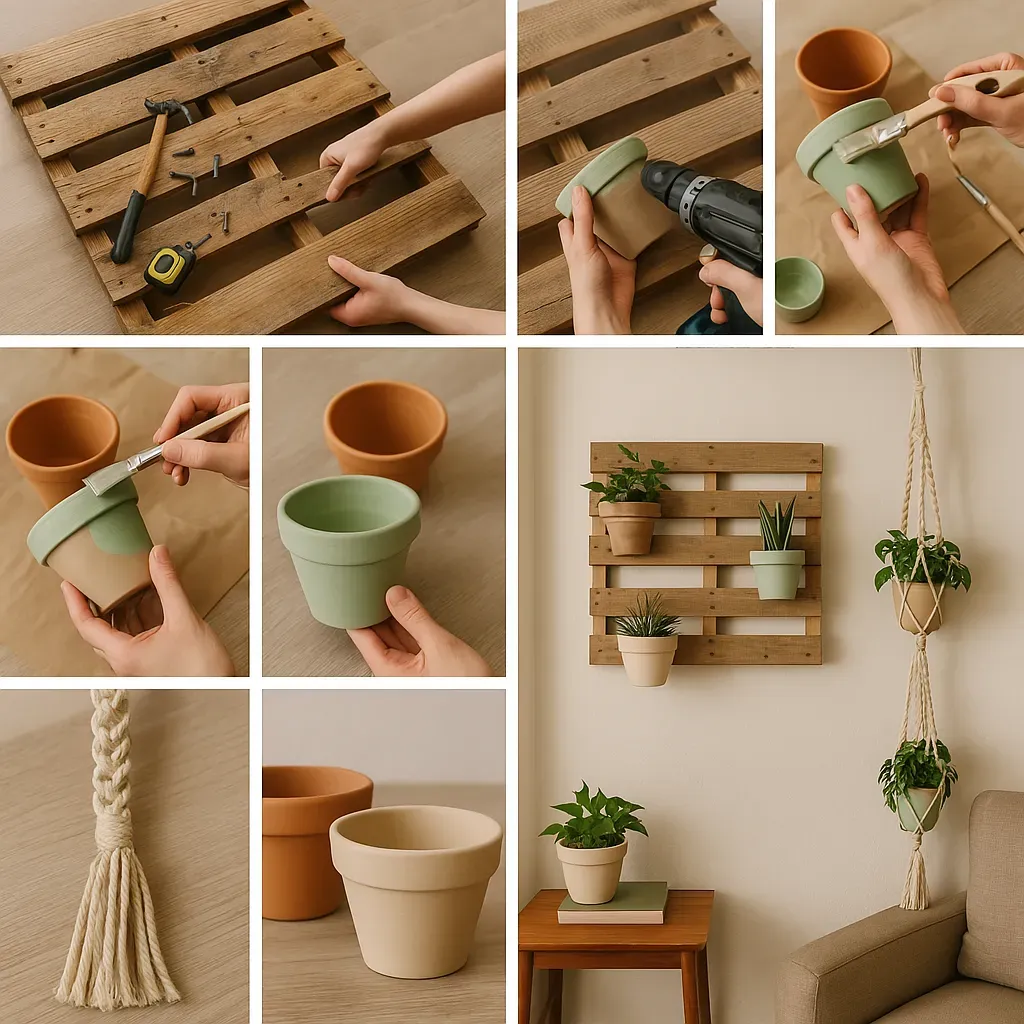
1. Pallet Plant Shelves: Upcycled Display with Character
- Find a pallet: Check local classifieds or hardware stores—many give them away for free!
- Prep: Sand down any rough edges and wipe clean. If you like, stain or paint the wood to match your style.
- Mount: For renters, lean the pallet against a wall or secure it with removable adhesive strips. For a more permanent solution, use wall anchors.
- Style: Place small potted plants, trailing vines, or even books on the shelves. The open slats create a breezy, organic look that’s pure biophilic design.
2. Thrifted Pot Makeover: Earth-Tone Chalk Paint Magic
- Gather: Pick up inexpensive pots from thrift stores or use what you have. If you need a set of versatile, neutral pots, KAHEIGN 6Pcs Plastic Plant Pots are a great, budget-friendly option.
- Paint: Choose chalk paint in calming earth tones—think sage, terracotta, or sand. Apply two coats for a soft, matte finish.
- Seal: Once dry, seal with a clear, water-based topcoat to protect from moisture.
- Arrange: Group your newly styled pots on windowsills or shelves for a cohesive, nature-inspired vibe.
3. DIY Macramé Plant Hangers: Affordable Hanging Greenery
- Supplies: All you need is some sturdy cotton cord (often found at craft stores for a few dollars) and a simple metal ring.
- Knot: There are plenty of beginner macramé tutorials online—start with a basic square knot pattern. Don’t worry about perfection; the handmade look adds charm!
- Hang: Use removable ceiling hooks to display your plants without damaging walls or ceilings—ideal for renters.
Each of these upcycled home projects is a small step toward a more affordable indoor gardening setup, and they’re as fun to make as they are to admire. Remember, your home’s story is told in the details—let your DIY plant decor reflect your creativity and love for nature. If you try any of these, I’d love to see your results—tag me or share your photos in the comments!
Layering for Impact: Creating Nature Vignettes in Small Spaces
One of my favorite ways to bring the outdoors in—especially when space is at a premium—is by creating nature vignettes. Think of these as little curated moments where textures, colors, and shapes come together to tell a story. Layering textures indoors is the secret to making these small space plant styling ideas feel intentional and inviting, rather than cluttered.
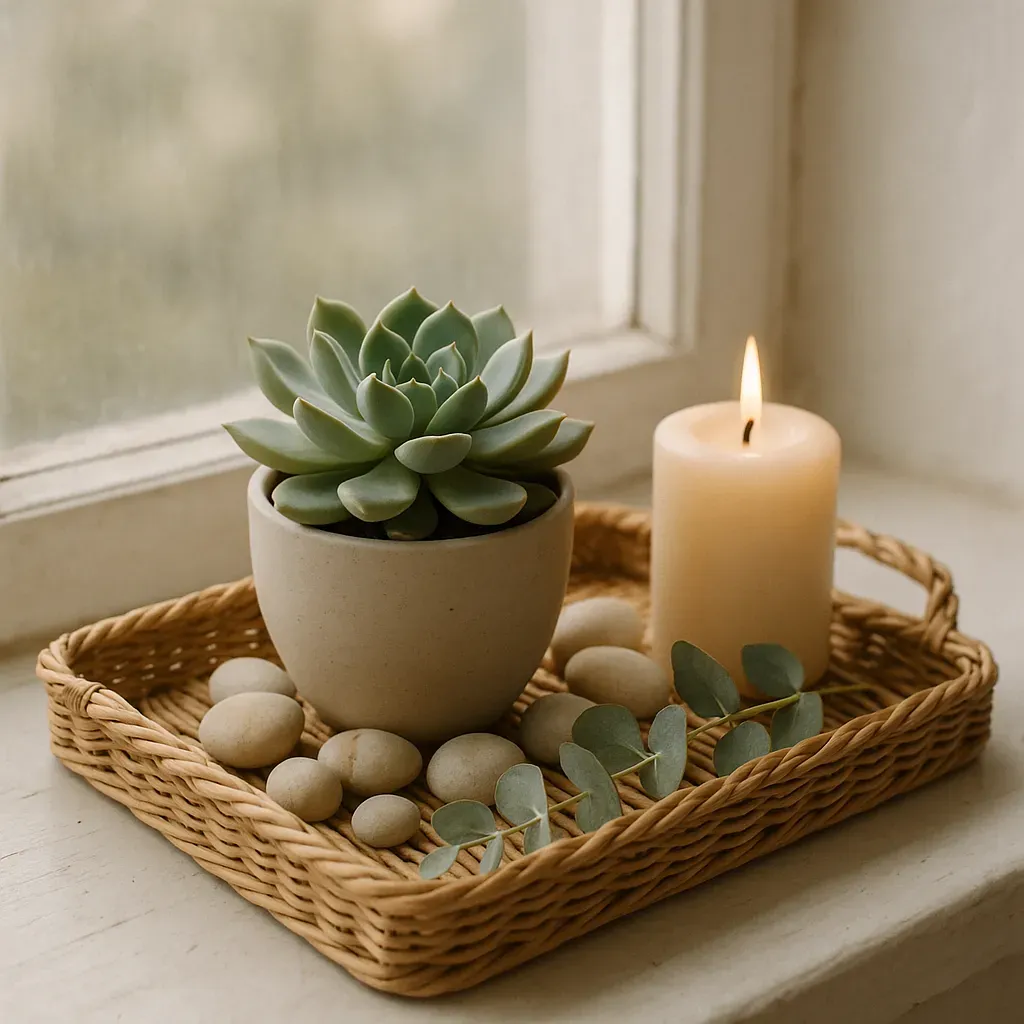
Start by choosing a base: a rattan tray, a wooden slice, or even a simple ceramic plate. This anchors your vignette and gives it a sense of place. Next, layer in natural elements with contrasting textures—try pairing a smooth stone coaster with a woven basket, or nestle a cluster of decorative pebbles beside a tiny succulent in a matte pot. I love mixing in a few dried branches or a sprig of eucalyptus for height and movement; it’s like adding a brushstroke to a living painting.
Grouping items in odd numbers (three is a magic number here) creates a balanced, organic look. Play with heights by stacking books or using plant stands—this draws the eye upward and makes even the smallest corner feel dynamic. If you’re in a rental, opt for portable pieces like lightweight baskets or modular shelves, so you can easily refresh your nature vignettes without leaving a mark.
Remember, the beauty of small space plant styling is in the details. A single trailing pothos, a bowl of river stones, and a candle can transform a windowsill into a peaceful retreat. Let your personality shine through by mixing textures and natural finds that speak to you. With a little layering and a dash of creativity, any nook can become a serene, nature-inspired escape.
Step-by-Step Blueprint: Transforming Your Space with Biophilic Design
Ready to bring the calming magic of nature into your home—without breaking the bank or needing a green thumb? Here’s your easy biophilic design blueprint, perfect for beginner indoor gardening and a budget home makeover:
- Choose Your Elements: Start by picking a few low-maintenance plants that suit your light and space. Snake plants, pothos, or ZZ plants are forgiving friends for beginners. Don’t forget natural textures—think woven baskets, wooden trays, or stone coasters. For a stylish and practical storage solution, consider Curver My Style Rattan Effect Storage Baskets to keep your space tidy and add a touch of natural texture.
- DIY Projects: Get creative with simple, affordable projects. Try upcycling jars into plant pots, crafting a mini propagation station, or making a pebble tray for humidity-loving plants. These little touches add personality and keep costs low. If you want to try a contained ecosystem, a DIY Terrarium Kit is a fun, beginner-friendly project that brings a lush, miniature landscape to your shelf.
- Smart Sourcing: Hunt for budget-friendly finds at local plant swaps, thrift stores, or online marketplaces. Even supermarkets often have hidden plant gems! Look for deals on planters and accessories, and don’t shy away from mixing and matching styles.
- Layer and Style: Arrange your plants at different heights—on shelves, window sills, or hanging from the ceiling—to create depth and visual interest. Pair leafy greens with textured pots or colorful accents for a designer touch that’s still approachable.
Remember, you don’t have to transform your whole space overnight. Start small—maybe with a single shelf or a cozy corner—and let your confidence (and plant collection) grow. Every little step brings you closer to a more serene, nature-inspired home.
Start your nature-inspired transformation today—your future self (and your space) will thank you!
